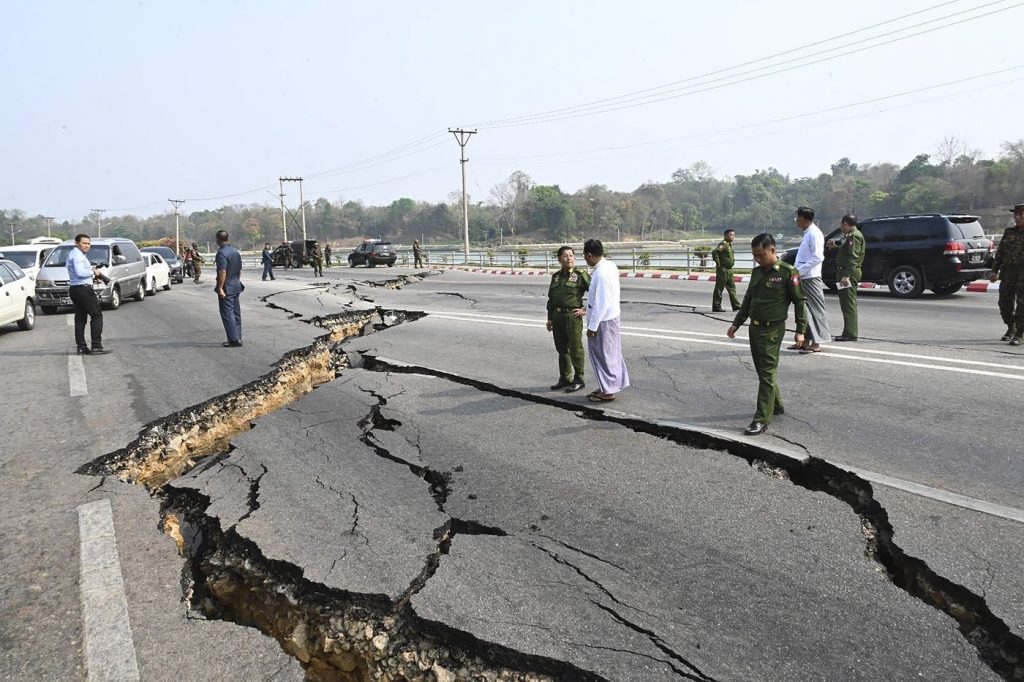The situation in Myanmar has deteriorated dramatically following a powerful 7.7-magnitude earthquake that struck near Mandalay on Friday. This disaster comes at a time when over 3 million people in Myanmar were already displaced due to a destructive four-year civil war. International organizations have claimed that this conflict has indiscriminately targeted civilians, exacerbating an already dire humanitarian crisis.
Videos shared on social media depicted widespread devastation in the aftermath of the earthquake, which was followed by a strong 6.4-magnitude aftershock. These tremors have raised grave concerns that many victims may be trapped under the rubble or worse. Due to stringent control over information and movement within the country, rescue efforts and assessment of the official death toll have become exceedingly challenging.
Myanmar, formerly known as Burma, has been in turmoil since the military coup that displaced the elected government led by Aung San Suu Kyi on February 1, 2021. Following the coup, widespread peaceful demonstrations were met with lethal force, prompting many opponents of military rule to take up arms. As a result, large areas of the country are now embroiled in conflict, complicating the political landscape.
Adding another layer of complexity is the influence of neighboring China. It is believed that China has tacitly supported military offensives aimed at shutting down organized crime activities that have been flourishing along its border, influencing the internal power dynamics within Myanmar.
Before the earthquake struck, the United Nations estimated that hundreds of thousands of civilians had already been displaced by ongoing internal fighting, contributing to a total of over 3 million internally displaced people in Myanmar. Furthermore, about 18.6 million people are currently in need of humanitarian aid. Unfortunately, recent cuts to foreign assistance have devastated the country even further, such as a 90-day freeze on foreign assistance programs announced earlier this year by U.S. President Donald Trump. This suspension has led to the reduction of services for refugees, including the closure of hospital care in camps in neighboring Thailand, where more than 100,000 refugees reside.
Hunger has emerged as a chief concern for many in Myanmar. A recent statement from the World Food Program (WFP) indicated that most food rations distributed in the country would be cut off by April, deepening an existing humanitarian crisis. The WFP requires $60 million to sustain food assistance efforts in Myanmar and is calling on partners to identify additional funding sources. Currently, 15.2 million people—nearly one-third of Myanmar's total population—are unable to meet their minimum daily food needs, with approximately 2.3 million facing emergency levels of hunger. Presently, the organization has funding only to assist 35,000 of the most vulnerable individuals, which includes children under five years old, pregnant and breastfeeding women, and individuals living with disabilities.
Health challenges are also mounting as aid continues to dwindle. Tom Andrews, a monitor on human rights in Myanmar commissioned by the U.N.-backed Human Rights Council, highlighted the dire health crisis stemming from the cessation of aid. Patients suffering from tuberculosis and HIV have been without their medications for weeks, while disabled children have been denied access to rehabilitation centers. Furthermore, rights groups that traditionally distribute food and water have encountered significant cutbacks in their operations.










